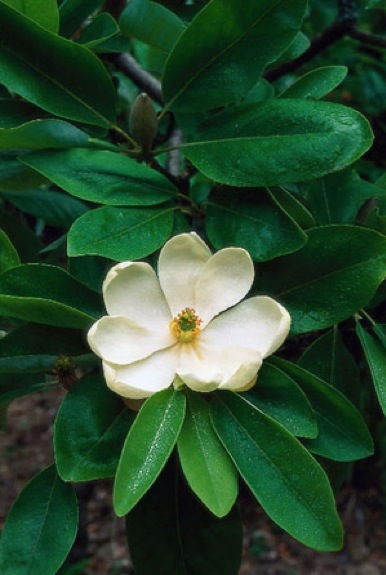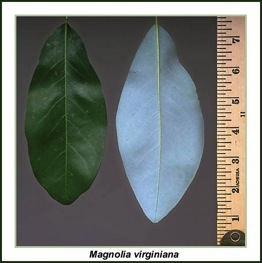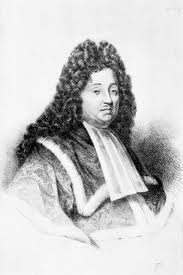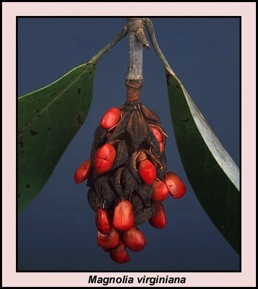
The Sweetbay has large, waxy blossoms
Magnolia viginiana: How Sweet It Is
Let’s say you want or need to trap a beaver. First you need a trap, but then you need to bait the trap. And then the question becomes, what do you bait a beaver trap with? There is an answer: Magnolia virginiana.

The silver is caused by little hairs
Beavers find the fleshy roots of the “Sweet bay” irresistible, a preference that was not missed by early colonists to North America. Beavers aren’t the only ones who find the tree a source of a meal. Deer and cattle like the leaves and twigs. It can be up to 25% of their winter diet. Squirrels, white-footed mice, turkeys, quails and songbirds like its fruit. Humans make a tea from its leaves and use them to flavor soups and stews.
Among those who consider such things the leaves of the M. virginiana are considered slightly inferior to those of the Perseas in flavor, though they are used the same way (to see an article on the Perseas elsewhere on this site click here.) While the Perseas have a more complex flavor profile the Sweetbay appeals more to the nose with a hint of vanilla. It is also a more attractive, larger tree. And the truth be told, the Sweetbay is a whole lot easier to identify than the Perseas. The lance-shaped leaves are a rich green on top and a solid silver on the bottom. When the wind blows, the tree flashes a handsome metallic sheen. That glimmer is caused by minute white hairs on the young leaves, which can be rubbed off.
The aromatic wood is soft, even-grained and very easy to work. Besides trapping beavers, it’s used for veneer, boxes, containers, tool handles, furniture, lumber and plywood. The Sweetbay ranges from Glouster, Massachusetts, to Florida to Texas, though it is most common in South Carolina, Georgia, Florida and Alabama.
Besides the Sweetbay the leaves of the Magnolia grandifolia can be used for seasoning (slightly bitter) and the petals of the blossoms pickled in a vinegar and sugar solution to make a condiment. Interestingly the Magnolias are related to the smaller papaw, but much younger say the botanists.
Two other magnolias are worth mentioning, M. hypoleuca and M. kobus. The young leaves, flower buds of the M. hypoleuca are boiled and eaten as a vegetable. Older leaves are dried then sprinkled on food as a flavoring. Whole dried leaves are filled like small boats with food then grilled. Leaves used that way are not eaten but they impart their flavor to the food cooked in them.
The flowers and buds of the M. kobus are also boiled and eaten. Older leaves are eaten or used to make a tea. The leaves are also dried and powered and used as a seasoning.
As for the scientific name, Magnolia (mag-NO-lee-ah) is named after French botanist Pierre Magnol, 1638-1715, who was the physician of King Louis XIV of France and was the director of a botanical garden at Montpellier and also a professor of Botany at Montpellier. Virginiana (vir-gin-knee-AY-nah) means of North America. Grandifolia means large leaves. Hypoleuca (high-poh-LOO-kuh) is Greek that means “under white.” Kobus (KOE-bus) is the native name for that magnolia.
Green Deane’s “Itemized” Plant Profile
IDENTIFICATION: The Sweetbay Magnolia is a tree to 90 feet, with an open crown of sparse branches. The farther north the smaller the tree. Its leaves are simple, alternating, oval to oblong, four to six inches in length. Its bark is gray-brown, smooth and tight. the thin leathery leaves are smooth and shiny green on top, white below. The fruit is an aggregate that releases many flat. oval, red seeds (not edible.)
TIME OF YEAR: Year round
ENVIRONMENT: It is found in swampy areas, wet soil and along streams and ponds.
METHOD OF PREPARATION: Leaves can be used to make a tea or use like a bay leaf to flavor soups and stews or make a marinade.



